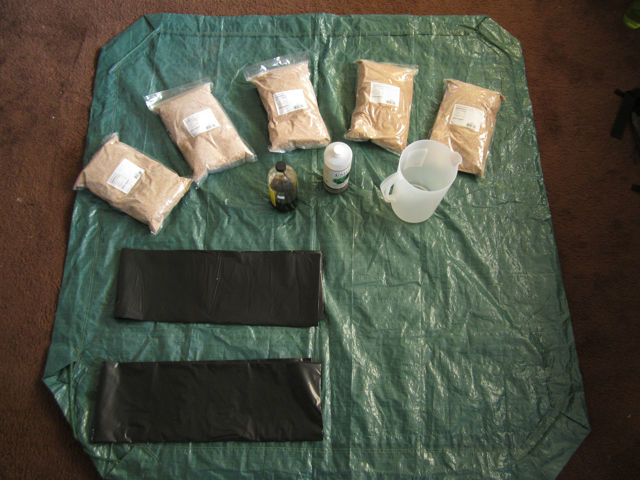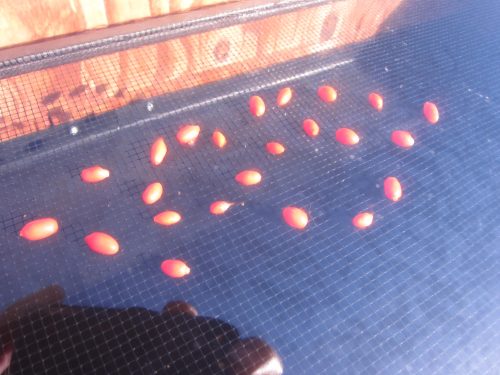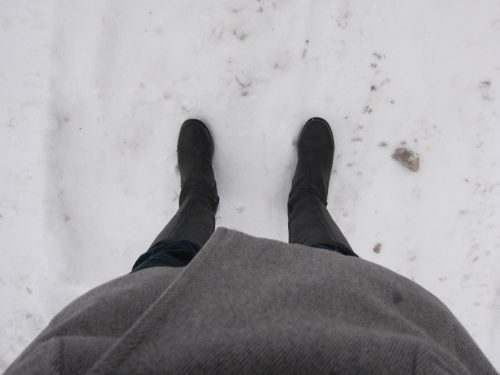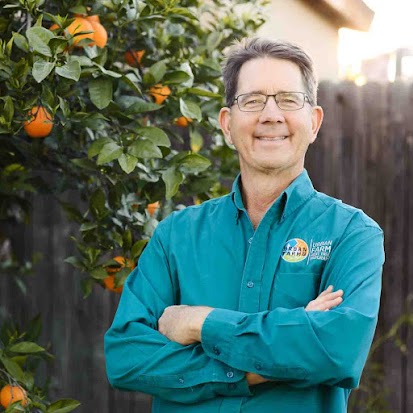I’m delighted to present a guest post from Mark Rainville, one of my fellow gardeners (with his lovely wife Michelle) at Ocean View Farms, who has been experimenting with E.M. Bokashi over the last year. This is the first installment to get you started down the fabulous road to fermented tea as fertilizer / soil conditioner. Take it away, Mark:
With all of the home composting options available, the bokashi food scrap fermentation system is one of the easiest and can be the most compact for urban apartment dwellers. This system can be a studio apartment scale or up-sized to fit the needs of a restaurant, school or farm. Within this series I will introduce bokashi, explain the process to produce the bokashi bran, the different uses, and how it can help the environment.
By now you are probably asking what is bokashi? Bokashi is a type of anaerobic (without air) fermentation. When I first heard of bokashi, I thought it was the new kid on the compost block. I came to learn that it had been utilized in the Far East since ancient times to process food scraps or organic materials to return their nutrients and beneficial microorganisms to the soil. Modern bokashi methods have adapted over time from age-old Korean farming and fermentation techniques.

Bokashi ingredients and equipment
While researching non-pathogenic microorganisms in 1982, Japanese scientist Dr. Teruo Higa dumped waste liquid filled with a mixture of microorganisms near some plants. A couple days later, he noticed that the plants had become more vibrant and healthy without any other interaction. With this observation, Dr. Higa began his research into beneficial microorganisms, which lead to the creation of a microbial inoculant formula that he branded EM-1.
The bokashi process retains more nutrients than traditional aerobic pile composting. The anaerobic process does not allow the organic material to rot or putrefy. Putrefaction processes lose valuable nutrients to heat, off gassing and runoff. By layering microorganism inoculated bran with organic materials, the microbes ferment or pickle the materials reducing their volume and concentrating the nutrients.
The bokashi process has minimal odor compared to some compost piles. Its odor is a vinegary sweet smell similar to home made beer fermenting. Some people keep the fermenting bucket under their kitchen sink; others don’t like the molasses-like yeasty smell and keep it in the guest bathroom or garage. The fermentation smell keeps pests and animals away; therefore, allowing this process to happen within a residence until the filled bucket is ready to be put in the earth.
Bokashi can greatly reduce household waste while creating a useful fertilizer and soil conditioner. In my next article, I’ll go over the specifics of starting a bokashi fermenting bucket, filling it up and processing it from food scraps to soil in a month. Let’s get fermenting!
Continue reading Part 2
Mark Rainville, originally from the Northeast, moved to SoCal in late
2007. He works in the architecture field. He is an aspiring artist,
gardener, writer and thinker. The joys of growing food has become a
major part of his life; it reminds us to think in the longer term and
that we can all overcome. He is a self-proclaimed modern renaissance man.
web: genrenomad.tumblr.com
twitter: www.twitter.com/genrenomad
Email Mark your bokashi questions and experiences: mobokashi@gmail.com




Pingback: Podcast: Raised Bed Design with Catherine McLaughlin - Gardenerd
Pingback: Do You Bokashi? - Part 3
Pingback: Tackling Food Waste - Gardenerd
Pingback: Gardenerd: Do you Bokashi? Part-2
Pingback: Do You Bokashi? - Part 3
Nice post. I recently strated with bokashi and found that it works extremely well in containers. I bury my bokashi waste in containers and mix it with soil. Above the soil I’ve planted tomatoes, peppers, basil and more.As far as purchasing a kit, I’ve been able to make my own bokashi bins for about $4 each. I also have made my own bokashi bran, which cost about 40 cents a pound to make.If you have the time and inclination, you’ll save a bundle making your own. Burying bokashi in the yard is great (I’ve done it once), but so far I’ve found it easier to bury it in containers. I’m brand new to this gardening stuff, but I’ve found that bokashi makes growing vegetables fool proof.